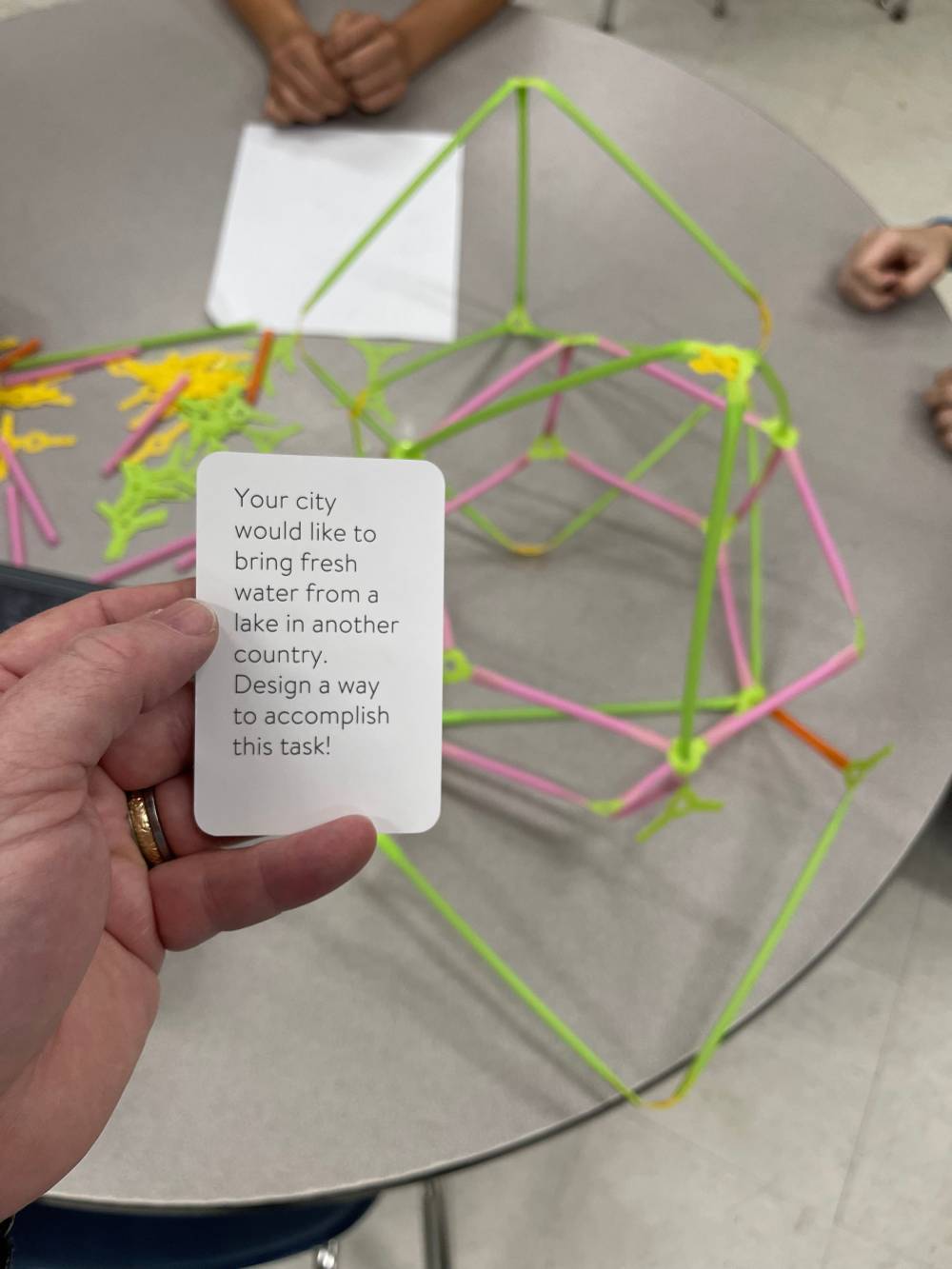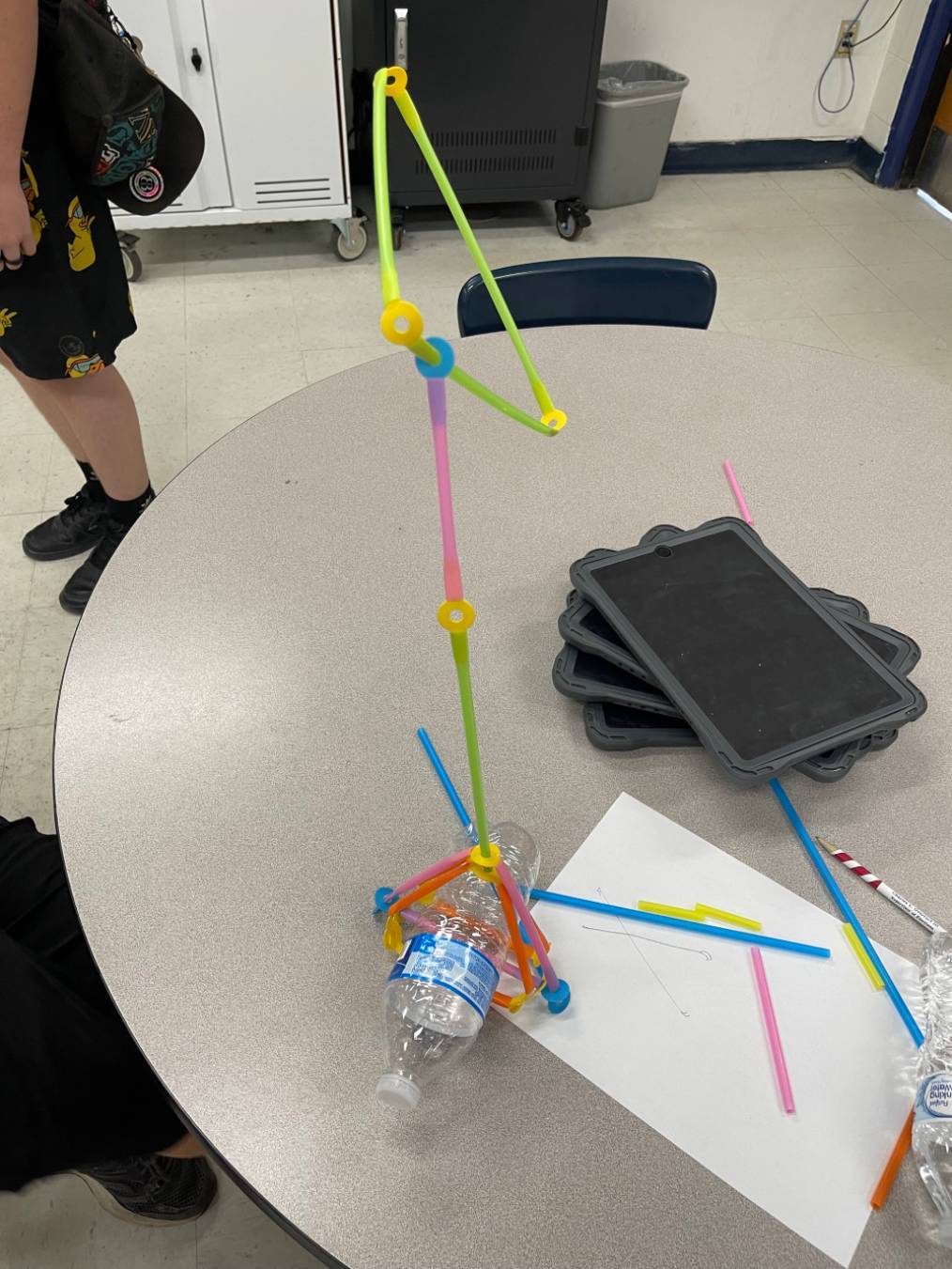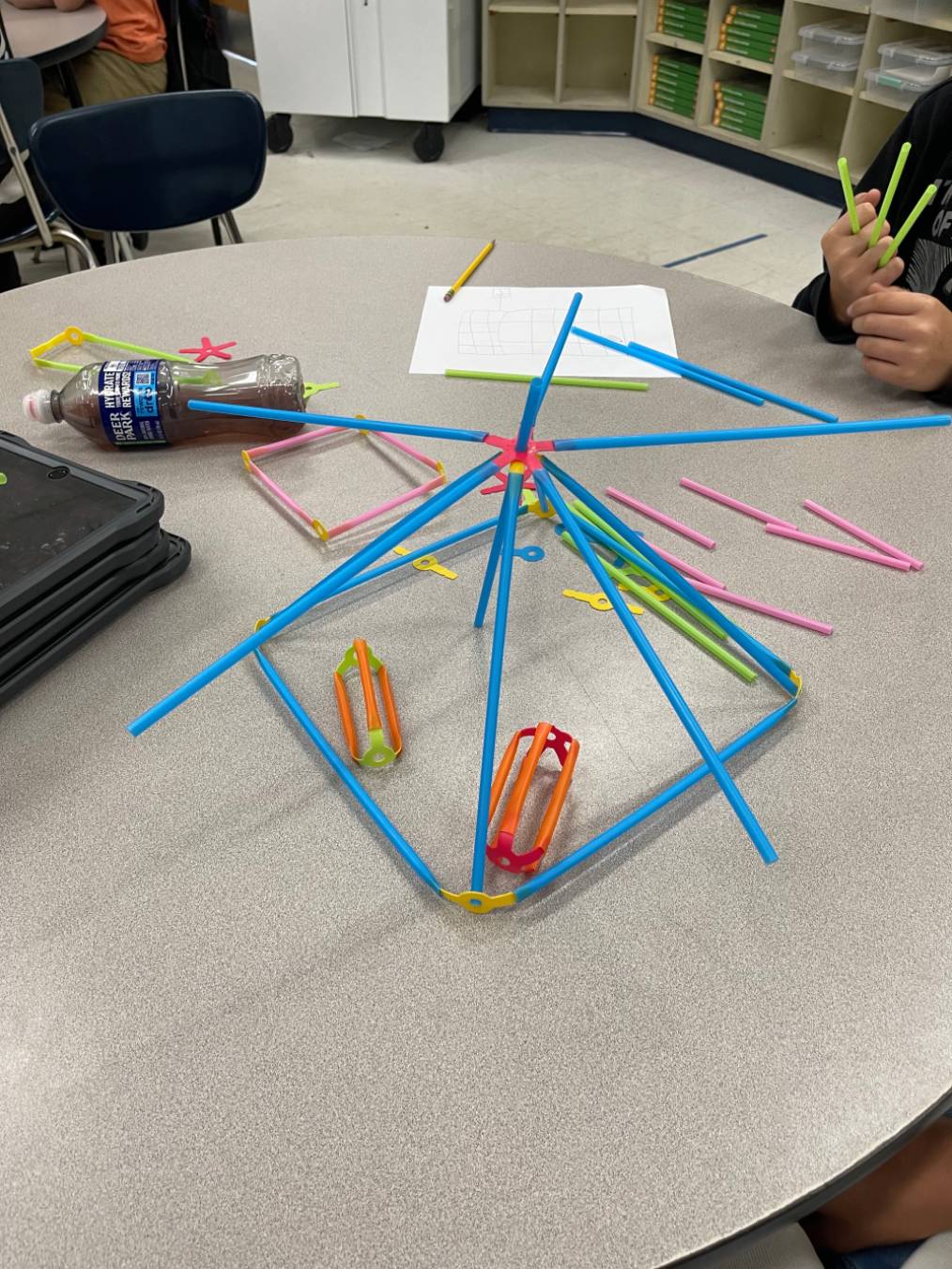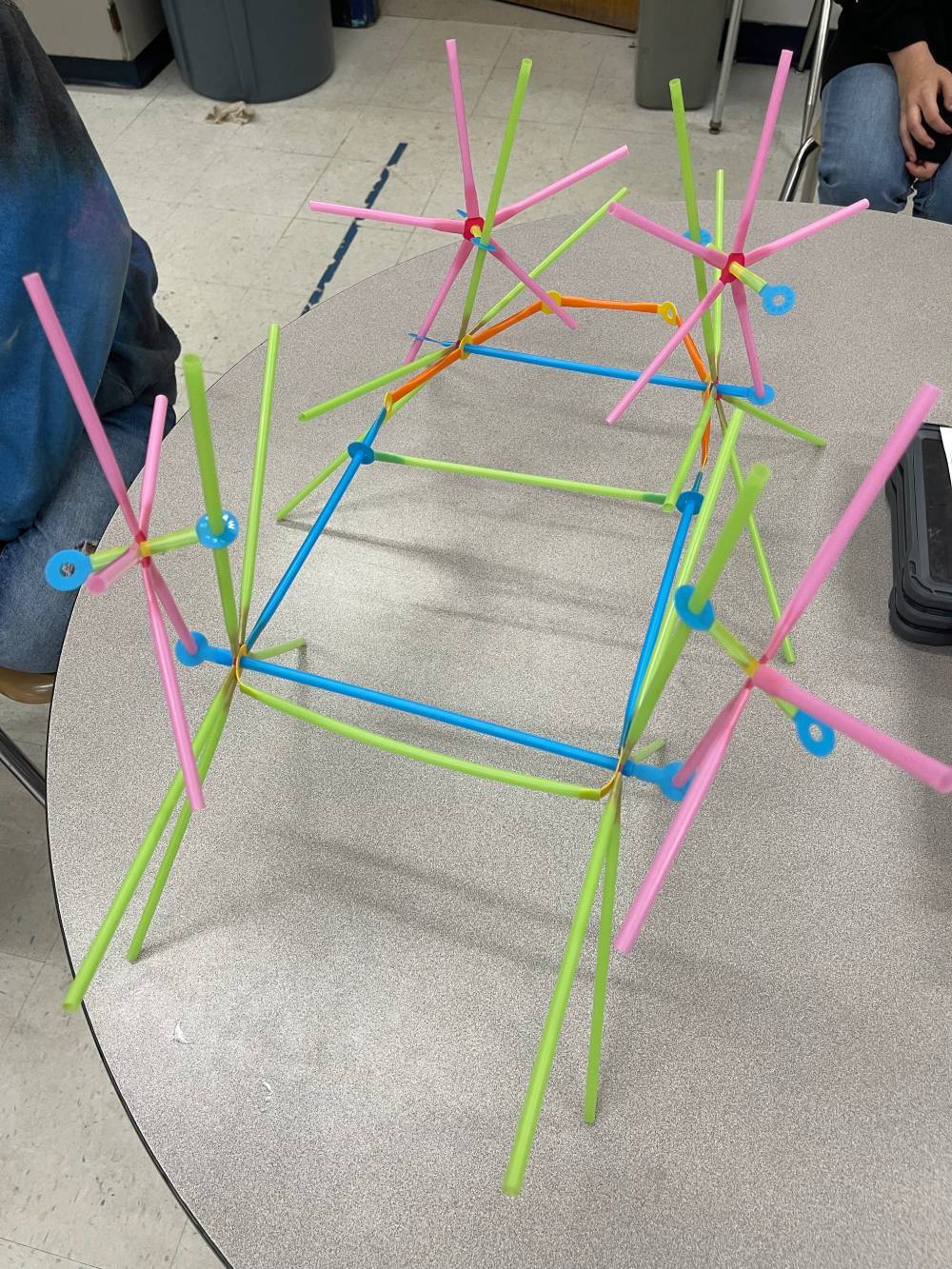
Hands-On STEM That's Always Ready to Go
Christopher Gallagher, an elementary STEM teacher in Putnam County, Florida, thrives on hands-on learning and improvisation. With Strawbees, he brings approachable, low-cost engineering challenges to students who might otherwise feel intimidated by tech-heavy tools.
Whether he's covering the engineering design process or just needs a go-to when the Wi-Fi’s down, Strawbees is a dependable favorite in his toolbox.

Christopher Gallagher
Elementary STEM Teacher
Putnam County School District
Florida
Background
Chris describes himself as a “button pusher”. He often doesn’t look at any instructions and instead just jumps in, starts pushing buttons and tinkering to work something out – and that’s how he approaches teaching. With Strawbees, he can easily implement those types of hands-on approaches in his classrooms.
After a family illness and a layoff changed Chris' life, he jumped into education, working in middle school science and then transferring to doing STEM in elementary school. When he jumped into the role of doing STEM, he jumped in and began using Strawbees.

Implementation
Because of Chris’ hands-on approach to education, he often finds that many STEM tools can make students hesitant at first.
“Compared to some of the other stuff we’ve got with our robotics, I don’t think they find it as intimidating to deal with. It’s a little bit more approachable for them to start building something. Because they’re used to straws and everything. It’s not super complex and it’s just easier for them to manipulate. They really enjoy it whenever I bring them out.”
What Chris loves about Strawbees is that he can utilize his hands-on approach and, instead of sticking to any structured lesson, he can give his students challenges to make certain shapes, animals or just create something with a time limit and see what they come up with. And because of his approach, he finds Strawbees extremely useful when other tech fails.
“It’s really nice for those days when the Wi-Fi goes down in the school and we can’t use the computers. I know that I’ve got Strawbees right there and I can grab them and put them out real quick and we can start building something. I can just plop them out on the table and they’re ready to go.”
In implementing lessons about the engineering design process, Strawbees also helps students properly build and iterate on whatever they prototype with the traditional marshmallow and toothpick towers.
“We can do a compare and contrast STEM activity where we can get into more of how the structure is different or build the same structure with Strawbees and see how they are different. That leads us to building techniques and the engineering design process.”
Strawbees’ approachability also helps Chris when he has to work with teachers and help them integrate STEM into their classrooms.
“They look at me as the STEM teacher, the technology guy but with a lot of the stuff that we do, it is something that they can definitely do as well. It’s just getting them introduced to it and making it less scary. When I first saw it myself, I was a little intimidated but then once I got into it, I was like, ‘This isn’t that bad’ so I always tell teachers, ‘If I can do it, you can do it.’ It’s so approachable that I can give them to anybody and we can start creating something within the first five minutes of having them.”
The decision to continue with Strawbees makes sense when it comes to the resources available to Chris. When looking at other tools like 3D printers, cost wise they could range in the thousands of dollars.
“With Strawbees, it’s something that you can get pretty easily and have it across the school, not just located in one area with one person having control of it. They’re affordable enough that they can go out to several teachers in different grade levels across schools. Every classroom could have it.”
After gaining a STEM certification, Chris is interested in maintaining a diversity of tools and applications for STEM in his schools, avoiding any niches. Strawbees’ ability to be hands-on, simple and easily visualizable by students that creates something tangible, Chris argues, is one of the best things about it.

Outcomes
What Chris has appreciated about Strawbees is how quickly students can complete builds. While other more computer-based applications can take more time, the builds he sees with students are easily learned and quickly applied.
“They can get something built pretty fast which keeps their attention. We can then move onto something else instead of it being a long, drawn-out project that some of the other systems that we have do. They like the quickness of it because they can build something and move onto another build or iterate or move to another group and help them build something.”
The only challenge Chris has faced is with how heavy-handed his students can be with some of the STEM tools that he’s worked with – but that’s one of the reasons that Strawbees is beneficial over any other tools that he works with. If a straw breaks, he can easily replace it without much of a fuss and he doesn’t have to worry about them falling on anyone or dropping off of a desk.
“With some of the other systems, when you have a controller go flying across the room because someone’s knocked it off a table, you’re like ‘That’s 400 dollars’. Whereas with Strawbees, it’s better for some of these kids than some of the super expensive stuff. I don’t have to worry about them dropping it or breaking anything with it.”
That, in addition to how easy it is to take Strawbees to different schools makes it easier for Chris to build stations and move them from classroom to classroom without needing a huge amount of big bulky boxes that you have to carry around or set up.
As Chris continues to use Strawbees, he is hoping to incorporate more of the coding and micro:bit into lessons.
“Coding and robotics is one of the things I want to incorporate more in the future. It’s just another aspect of getting students to see what else they can program instead of just robots and the current tools we have for them.”
He also is keen to get Strawbees into more of the math and science classes. He can easily see it being applied in middle school with geometry, angles and the way building certain prototypes can lead into calculating force and even in language arts and social studies to build dioramas.
“I’m going to be looking at how I can get some of these crosscurricular activities into some of the other classrooms. I’ve done it before when I worked in middle school. Since this will be my third year coming into STEM, this is definitely one of the things I want to focus on.”
Going forward, Chris can see Strawbees’ use expanding beyond STEM in Elementary School into other grade levels and subjects.
“Strawbees is one of those things that will always be there for me.”


How Chris Implements STEM
“With some of the other systems, when you have a controller go flying across the room because someone’s knocked it off a table, you’re like ‘That’s 400 dollars’. Whereas with Strawbees, I don’t have to worry about them dropping it or breaking anything with it.”
Christopher Gallagher
Elementary STEM Teacher, Putnam County School District, Florida
